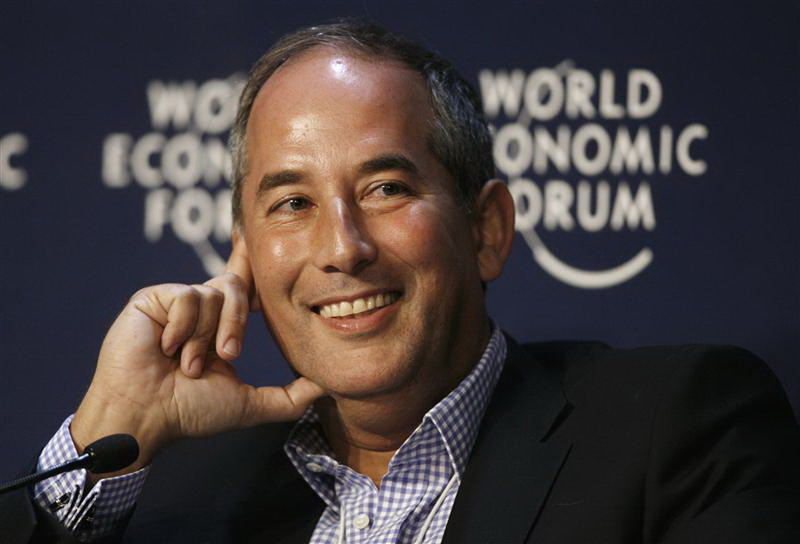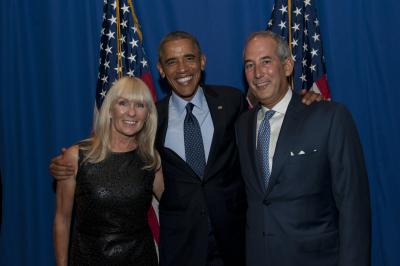I spoke recently at an interesting monthly gathering of smart switched-on tech and media leaders in Brooklyn organized by the very talented Sam Lessin – also known among friends of his accomplished father Bob as “Lessin 2.0.” The salon is called Y+30 and challenges its presenters to discuss a different industry each month focusing on what it might be like 30 years into the future. Although daunting at first this challenge is strangely liberating for those of us whose normal strategic horizon is the quite tactical and incremental three to five years.
For my talk I chose the future of financial information and focused on how one day public company disclosure might overcome its current limits of time and space. In particular I posited a world awash in financial and operating data in which company executives no longer pretended to control the timing and nature of information about their enterprises which is disclosed to the public through then outdated constructs such as 10-Ks 10-Qs and press releases. Instead there would be a constant flow of data directly distributed from every firm’s ERP systems. Similarly such antiquated geographical concepts as onshore vs. offshore markets domestic regulation and “flowback” would be rendered meaningless by seamless global trading and regulation.
Granted these ideas are a bit far-fetched but that is precisely the ground rules of Y+30. Given the calls for greater international regulatory coordination in response to the current economic crisis and the prevalence already today of expert networks like Gerson Lehman and primary research such as pinging ecommerce sites for sales data perhaps my vision is in fact not sufficiently long-sighted.
In the event my talk itself and the ensuing discussion was not particularly controversial (at least in this crowd) but my answer to a somewhat unrelated question on the future of newspapers has been ricocheting in an increasingly inaccurate way across the blogosphere. I did in fact imagine a future (again 30 years hence) when a newspaper (in my example my hometown New York Times) could employ only 60 journalists rather than the hundreds who work there today. In my example I challenged our conception of what a newspaper must include and imagined my theoretically ideal paper which combined New York Times content on the Middle-East the FT on Europe the Wall Street Journal or Reuters for finance ESPN for sports and so on. The web of course already makes such a mash-up possible today either through browser tabs or RSS feeds.
In this sort of disaggregated world the NYT would not need a staff of hundreds to produce a fully integrated newspaper any more than Apple needs to manufacture its own hard drives or touch screens. I imagined that to really focus on one or two core strengths that it could do better than any other publication the Times might need 30 star journalists – the Tom Friedmans and William Safires a couple of great editors and then an up and coming group (or farm system) of 30 junior staff who could grow into the next generation of stars. I readily admit this would be much different from our current view of what a newspaper should look like but ironically this alternative reality is not so far removed from that apparently described by the great Times editor Max Frankel in a memo to management several years ago (see The Inheritance Vanity Fair May 2009).
Even if this vision of a more open and interoperable newspaper were financially viable it will be difficult for the current generation of integrated papers to get there. I know from painful personal experience at Reuters that it is much easier to build new from zero to 60 staff than to reduce 1000 to 60. Moreover there is no reason to believe (just because I came up with a low number to be intentionally provocative) that the “right” number is not 200 or 300. The principle however is the same. When I fly on American Airlines I am actually pleased they feature Starbucks coffee rather than American Airlines coffee. I don’t want Starbucks baristas flying or maintaining the 777 but I see no reason other than inertia why every function must be staffed by “insiders.”
The modern digital world is increasingly frictionless. This requires every company that wishes to survive and prosper to really understand and focus on its core competence. To repeatedly ask “what do we do better than anyone else? What defines us?” At Thomson Reuters some of our businesses used to build their own computer hardware and operate communications networks but these are not our core skill set. Today we still build our own editing systems but likely not for ever. Newspapers are glorious fabled institutions which serve an important civic role but that does not give them a perpetual bye to avoid change and reinvention like the rest of us.






American newspapers and the United Nations have one thing in common: if you didn’t have them you would soon find out you needed them. Newspapers have hit a rough patch the past half-a-decade or so but with time you will see them re-emerge in a form and ownership scale of that of their early early years. You will see more local ownership smaller circulation numbers and heavy local content; that is local stories that are tied to big global issues. Big newspapers that are corporate owned are a thing of the past. In the next 10 years you will see a “back-to-the-future” journalism newspaper world. Newspapers are not relegated to the trash bin of history – far from it! Danny L. McDaniel Lafayette Indiana
Similar concerns shared by others. http://blog.newscred.com/?p=184
PR will have its say in this matter! 🙂 It’s an interesting idea towards a truly transparent financial society. Aggregation and per-user customization of the data would probably well accompany this realtime streaming. Then there’s of course a question whether we’re starting to skid into a multiple-truths snapshot of the society where people don’t get the same information anymore.
Although American Newspapers are dying mostly it’s the general news and local papers big business newspapers because of the global economic downturn although digital market data is king most finance professionals still rely on print papers like the FT or the Wall Street Journal for financial news even the big business channels like Bloomberg and CNBC use the FT’s or the Journal’s News for accurate reporting so yes digital is domainting but there will still be print papers in business news.
Simply if today’s newspapers focused on providing real news to use they would not have such a great challenge in attracting today’s more information savvy audience. In the age of the multimedia interactive Internet user-friendly search engines and a multitude of informative blogs newspapers must do better in providing truly informed perspectives and relevance about news and events in a more reader-friendly format. With alternative local and global outlets (print and online) for acquiring up-to-the-minute news consumers are no longer willing to fall for the bait and switch of many so-called newspapers providing nothing that’s new. Reassessing the difference between providing truly substantive news and information versus typographical filler and fluff may save a newspaper’s brand (both print and online versions) from becoming relatively irrelevant.